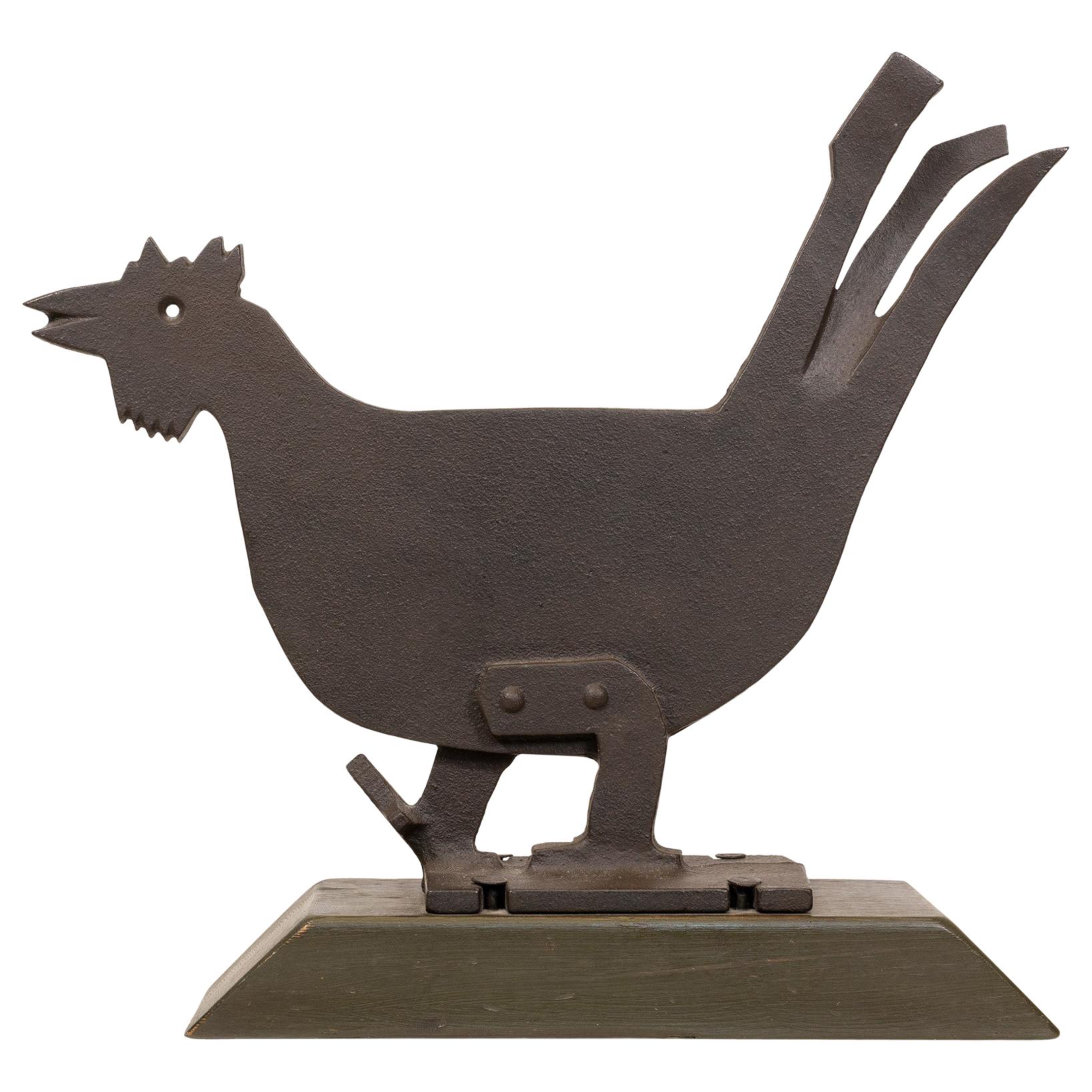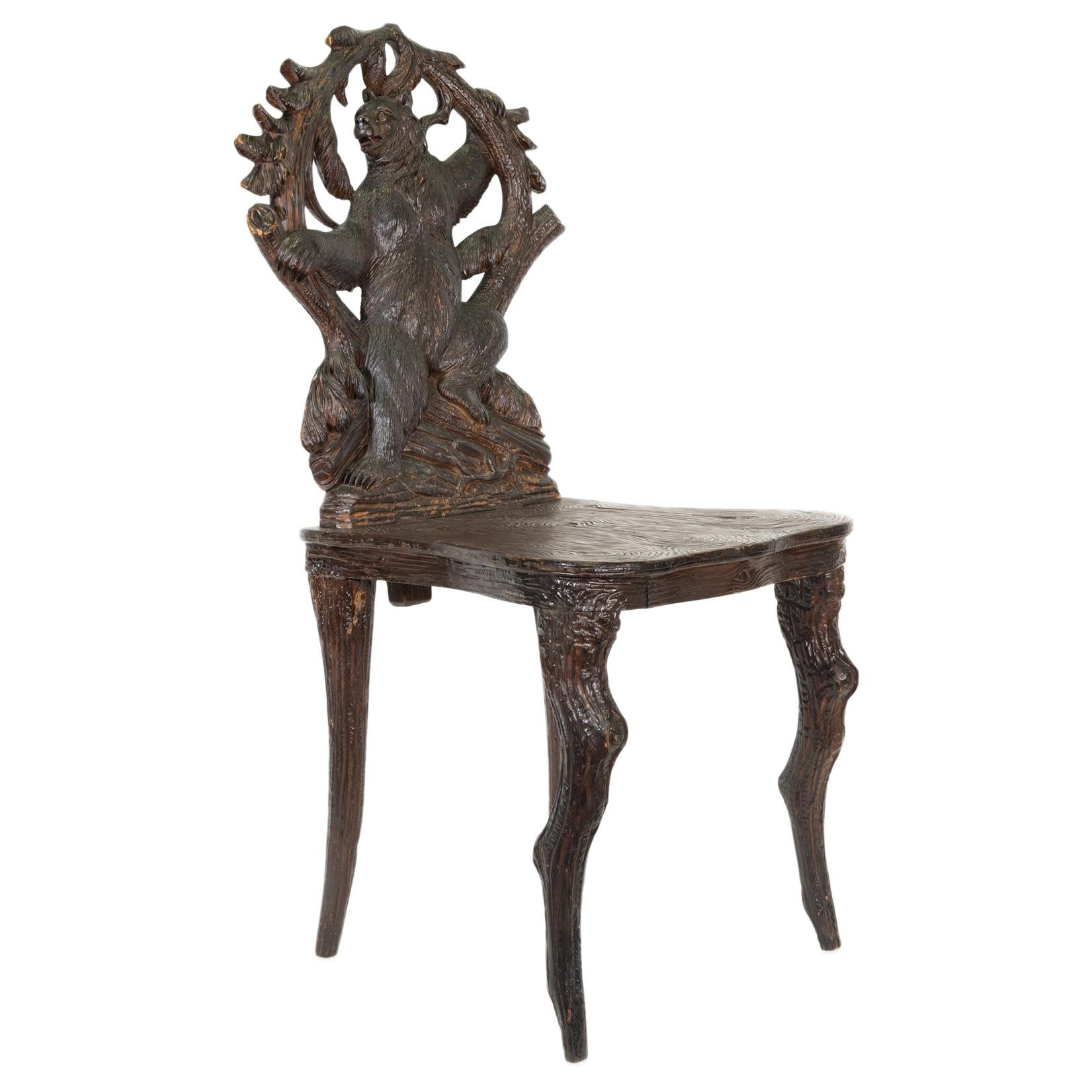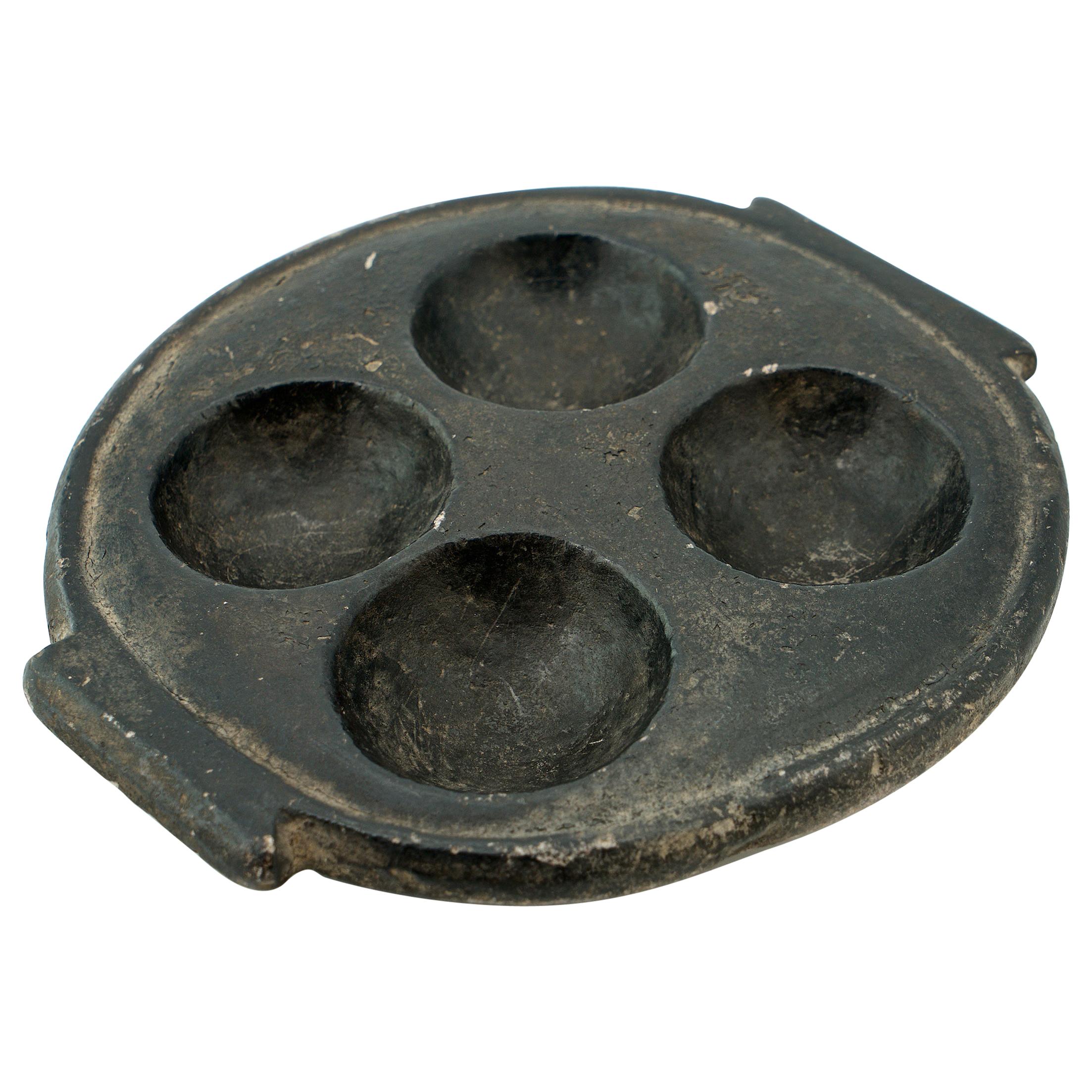Items Similar to Megalithic Stela
Want more images or videos?
Request additional images or videos from the seller
Megalithic Stela
About the Item
A tall anthropomorphic stele of carved granite, divided into two distinct regions of the body and face. The body is a single unarticulated block, but the facial features are outlined with strong carved lines. A T-shape marks the position of the nose and eyebrows, with two small horizontal lines for the eyes and a third, slightly deeper, line for the mouth.
Stele of this kind are represented in many major traditions in prehistoric Europe. These include: southern Ukraine and Moldova, regions of the Italian and Swiss Alps, Lunigiana in the Apuan Alps, Southern France, Sardinia, Corsica, Iberia, Southern Italy, Malta, the Paris Basin, Channel Islands, Germany, Hungary, and Bulgaria. Due to the scarcity of the archaeological record, it is impossible to estimate the total numbers of stelae in each group, but the largest known groups are those from Lunigiana and Ukraine, which each have over 100 known examples.[1] Although each traditional has its own characteristics, there are still many commonalities across geographically distinct localities. The question of how such widely dispersed but clearly related traditions can have come about and continued for over a thousand years (between about 3500 and 2000 B.C.) is still something of a mystery.
Most stele are removed from their archaeological context before they are found – it is not uncommon to find them reused in modern architectural structures. Those that are found in context are generally in monumental, often funerary sites. Some are used as grave or mound markers, and others have been found within tombs and burial chambers, or in groups at ritual sites. They have therefore been interpreted as representing gods or ancestral figures. Due to their scale and materials, it would have been a large undertaking to produce one of these stele, which was probably carried out by groups within the community rather than single individuals.
[1] John Robb, ‘People of Stone: Stela, Personhood, and Society in Prehistoric Europe’, Journal of Archaeological Method and Theory, 16:3 (September 2009), pp. 169-170.
Provenance:
Previously on the European art market, from at least 1970.
Previously in the Private Collection of Dr. Wolfgang Meyn, Soest, Germany, acquired from the above in 1972.
Private Collection of Mr. Rob Fens, The Netherlands, acquired from the above.
Spanish Art Market, 2023
ALR: S00235754, with IADAA Certificate, this item has been checked against the Interpol database.
- Dimensions:Height: 26.38 in (67 cm)Width: 11.82 in (30 cm)Depth: 5.91 in (15 cm)
- Materials and Techniques:
- Place of Origin:
- Period:
- Date of Manufacture:3rd Millennium B.C.
- Condition:Wear consistent with age and use.
- Seller Location:London, GB
- Reference Number:
About the Seller
5.0
Vetted Seller
These experienced sellers undergo a comprehensive evaluation by our team of in-house experts.
Established in 1910
1stDibs seller since 2020
- ShippingRetrieving quote...Ships From: London, United Kingdom
- Return PolicyThis item cannot be returned.
More From This SellerView All
- Ushabti for ImenmesLocated in London, GBA mummiform ushabti in blue faience. Four registers of hieroglyphic characters are painted around the lower half of the ushabti, with a vertical column of hieroglyphs in the centre o...Category
Antique 15th Century and Earlier Egyptian Egyptian Antiquities
MaterialsFaience
- Bronze SirenLocated in London, GBSirens were dangerous bird-like females who tempted sailors with their hauntingly beautiful song. In Homer’s Odyssey (XII, 39) Odysseus and his sailors were warned about the lethal c...Category
Antique 15th Century and Earlier Greek Classical Greek Antiquities
MaterialsBronze
- Two Glass Inlay PairsLocated in London, GBTwo pairs of two halves from the same bar, finely detailed, with pointed ears and eyebrows, opaque yellow face, opaque red on the mouth, nose, eyes and ears, translucent cobalt blue edges to the mouth, nose and ears, with translucent emerald green leaves above and between the translucent cobalt blue brows and eye line, translucent pink pupils, with translucent cobalt blie and opaque white snake scales below the face, in translucent cobalt blue matrix, cut in the lower part of a cartouche design. These rare heads might represent the Agathos Daimon, the tutelary deity of Alexandria, who was also identified with Serapis, the male counterpart of Isis-Thermouthis (who in turn was a graecisized form of the early snake harvest goddess Renenutet). In a statue of Isis-Thermouthis in Alexandria museum (no. 25773, ex-collection King Farouk I), reproduced in Gotten, Pharaonen, no. 151, the snake goddess...Category
Antique 15th Century and Earlier Egyptian Antiquities
MaterialsGlass
- South Arabian Head of a WomanLocated in London, GBA female head finely carved from evenly-coloured cream alabaster. The face features a strong chin, high rounded cheekbones, and large elliptical eyes deeply inset for inlays. The remains of the nose indicate that it was long, thin, and roughly triangular in form. A small, round mouth sits just below the nose. Deeply incised eyebrows follow the shape of the eyes, which are framed by unusual grooved canthi on either side, possibly to represent cosmetic eye paint. The supraorbital margins above the eyes are deeply carved, while the carving below the eyes is more subtle, smoothing the sockets into the rounded cheeks. The ears are formed from two arcs and a central sphere, and both lobes are pierced for earrings. The long hair frames the face below the ears, and is carved to create a rougher texture. There is a stock sticker on the back of the neck. A fragment of the right shoulder remains. This suggests that the head was part of a larger sculpture, possibly a full figure (though this seems unlikely due to its relatively large scale) or, more likely, a bust. This head is stylistically aligned with those found at Timna, the capital of the ancient Yemeni kingdom of Qataban, which existed from the 1st millennium BC until the late 1st or 2nd centuries AD. Timna served as an important hub of the Incense Route, the camel caravan that transported incense from Arabia and India to ports on the Mediterranean Sea. Roman author and philosopher Pliny the Elder (23/24-79 AD) described Timna as a busy city with around 65 temples. Excavations in 1950 and 1951 by Wendell Phillips...Category
Antique 15th Century and Earlier European Antiquities
MaterialsAlabaster
- Bronze HoardLocated in London, GBDagger L: 27.8 cm, Luniform bronze, possibly a belt buckle L: 10.8 cm, Shield-shaped bronze with a point Diam: 6.5 cm, Pommel Diam: 3.7 cm, Violin-bow brooch L: 17.5 cm, P-Shape...Category
Antique 15th Century and Earlier European Classical Roman Antiquities
MaterialsBronze
- Anglo-Saxon Hanging BowlLocated in London, GBA very rare and near-complete copper-alloy hanging bowl and associated fittings. Crafted from a single sheet of bronze, the body of the bowl is curved, with a slightly recessed lip. ...Category
Antique 15th Century and Earlier English Antiquities
MaterialsBronze
You May Also Like
- Asian Indian Hindu Ethnographic Tribal silver Amulet necklace VintageLocated in London, GBIndian Hindu Silver Amulet necklace Heavy bullet shaped Amulet necklace with pointed ends with floral and geometric design High grade silver Pendant Length 9 cm weight 90 gra...Category
Early 20th Century Southeast Asian Antiquities
MaterialsSilver
- Antiquity of Roman Large Bust-Weight of Venus with Silver Inlaid Eyes, GermanyLocated in Antwerp, BELarge bust weight of Venus with silver inlaid eyes and celestial diadem,Roman culture,Germany,2nd-3rd century AD. The goddess is depicted nude, slightly gazing to her right with detailed silver inlaid eyes and firmly expressed lips. Her hair is piled high in two parts, loosely drawn back and tied in a chignon. The goddess has been depicted nude, wearing an impressive celestial diadem with three luminaries (two of them silver inlaid) and six lunae. Material: Bronze (copper alloys and lead), decorated with silver inlays. Traces of lead fillings for calibration of the weight Dimensions: Height 14 cm. Provenance: Old private coll. Munich, Germany before 1980. Later : Görny and Mosch GmbH, Munich, 1999/ Private coll. Schellingerhout, Nieuwenhagen, Netherlands (acquired in 1999) / ex private collection KS, Antwerp, Belgium. Certificate:Akanthos. Akanthos Ancient Art Antwerp Expertise For: Artefact: Bust weight of Venus (Aphrodite) with large celestial diadem and silver inlaid eyes. Country: Germany. Culture: Roman. Date: 2nd-3rd century AD. Material: Bronze (copper alloys), decorated with silver inlays. Traces of lead fillings for calibration of the weight Lit: Published and illustrated: GM Munich, 98 /1999 number 2307. Provenance: Old private coll. Munich, Germany before 1980. Later: Görny and Mosch GmbH, Munich, 1999/ Private coll. Schellingerhout, Nieuwenhagen, Netherlands (acquired in 1999) / ex private collection KS, Antwerp, Belgium. Remarks: Dimensions: Height: 14 cm. Steelyard weight...Category
Antique 15th Century and Earlier Classical Roman Antiquities
MaterialsBronze
- American Rooster Sheet Iron Boot ScraperLocated in Coeur d'Alene, IDArts & Crafts stylized sheet iron rooster boot scraper on wooden base. Period: Mid-20th century Origin: United States Size: 12" H x 12" L. Family Owned & Operated Cisco’s Gallery d...Category
Antique Mid-19th Century American Sports Equipment and Memorabilia
MaterialsIron
- 19th Century Black Forest Carved Bear ChairBy Black ForestLocated in Coeur d'Alene, IDBlack Forest Swiss carved chair having bear on fallen log. Carved bear on lifting seat which once had a music box. Part of the Brienz collection pla...Category
Antique Late 19th Century Swiss Black Forest Chairs
MaterialsWood
- African Black Stone Palette Dish Bowl Ashtray Relief SculptureLocated in Hyattsville, MDNative carved blackened stone artifact, weighs 2 lbs 12 oz. Age is unknown, estate purchase.Category
Antique 15th Century and Earlier Puerto Rican Pre-Columbian Abstract Scu...
MaterialsCast Stone
- 19th Century American Wire BuggyLocated in Los Angeles, CAThis fine folky handcrafted wire doll or teddy bear buggy is in fine condition and workable order. The wheels work and you can use this child's doll buggy.Category
Antique 19th Century American Adirondack Antiquities
MaterialsWire





